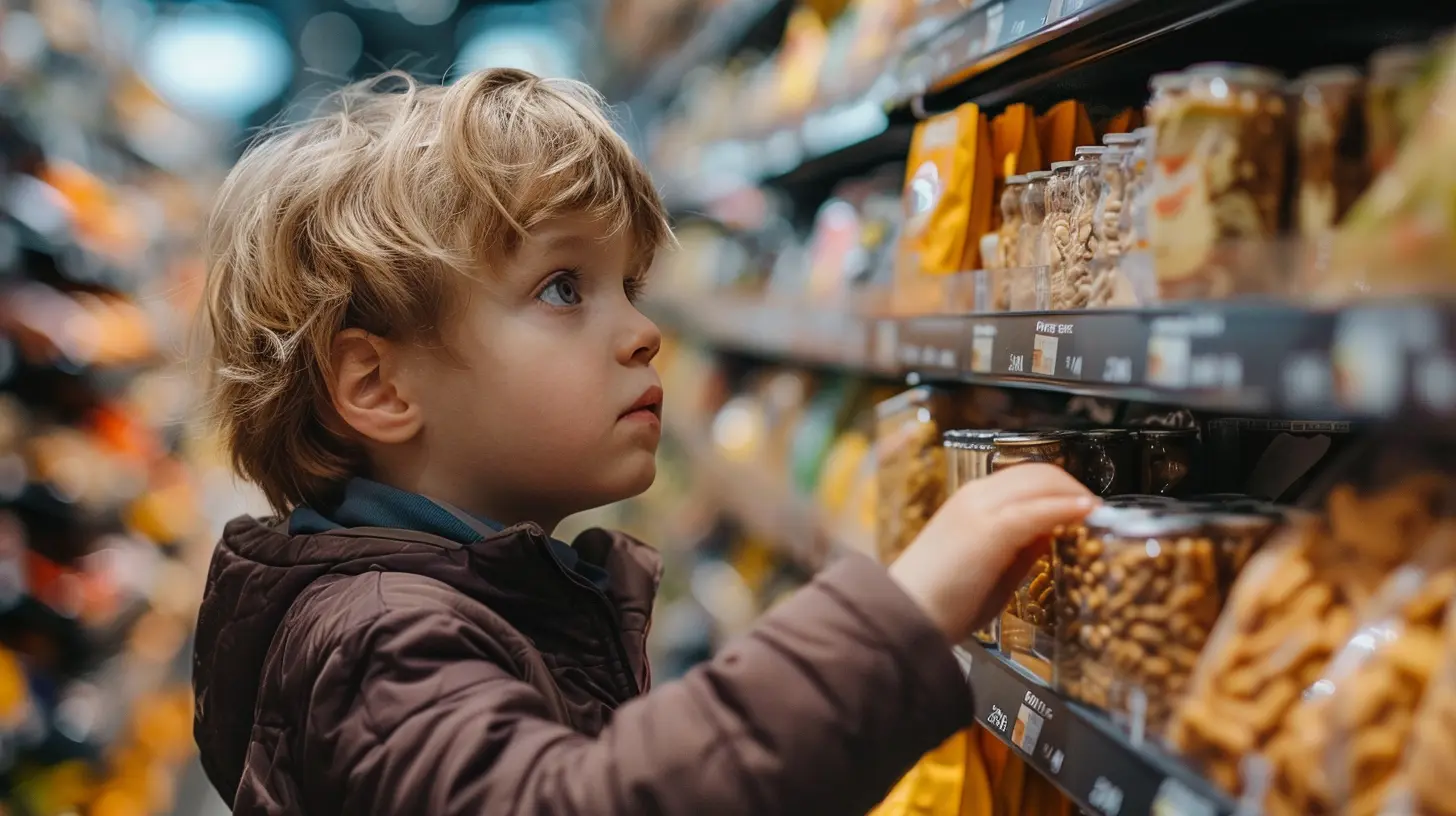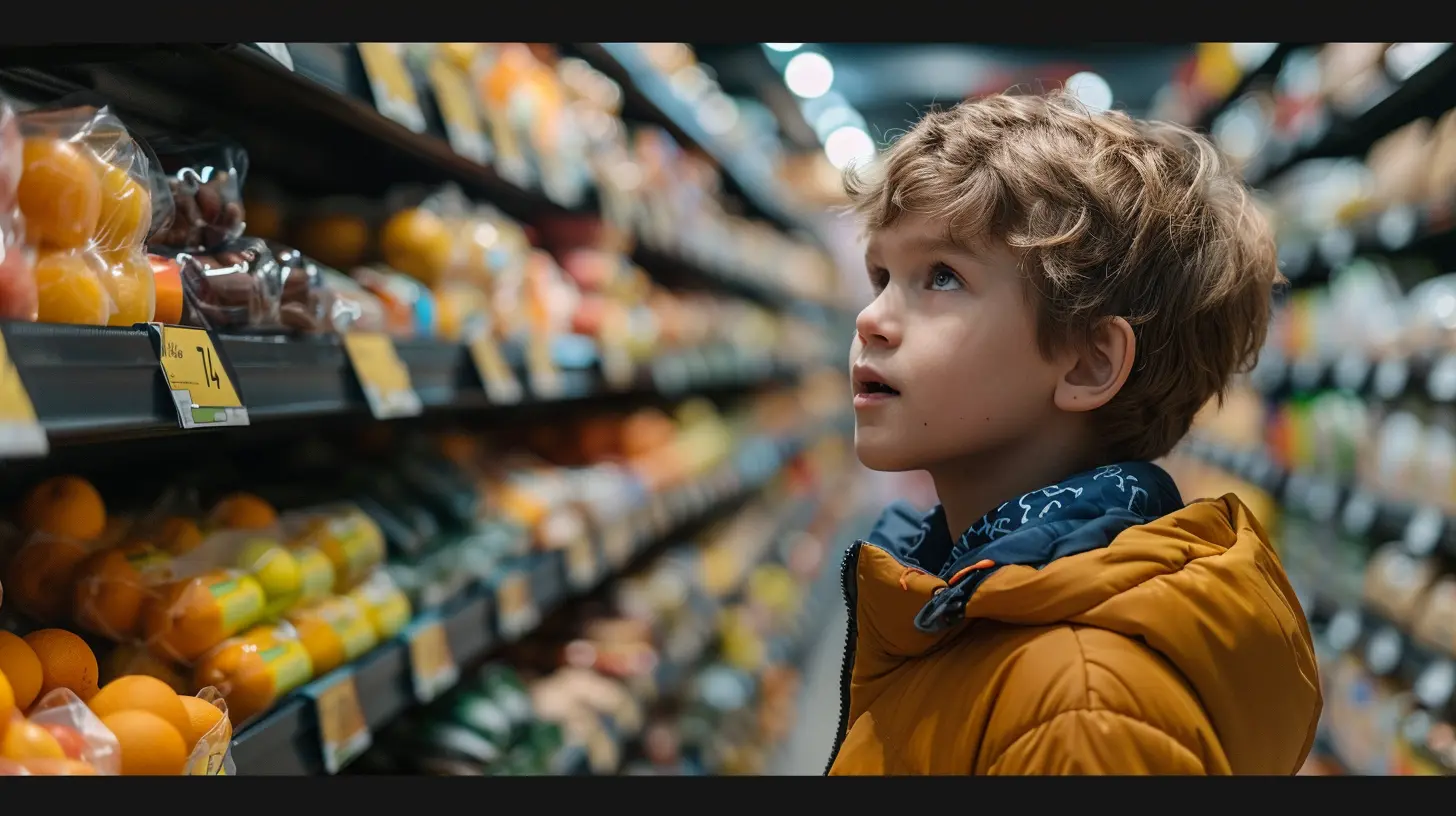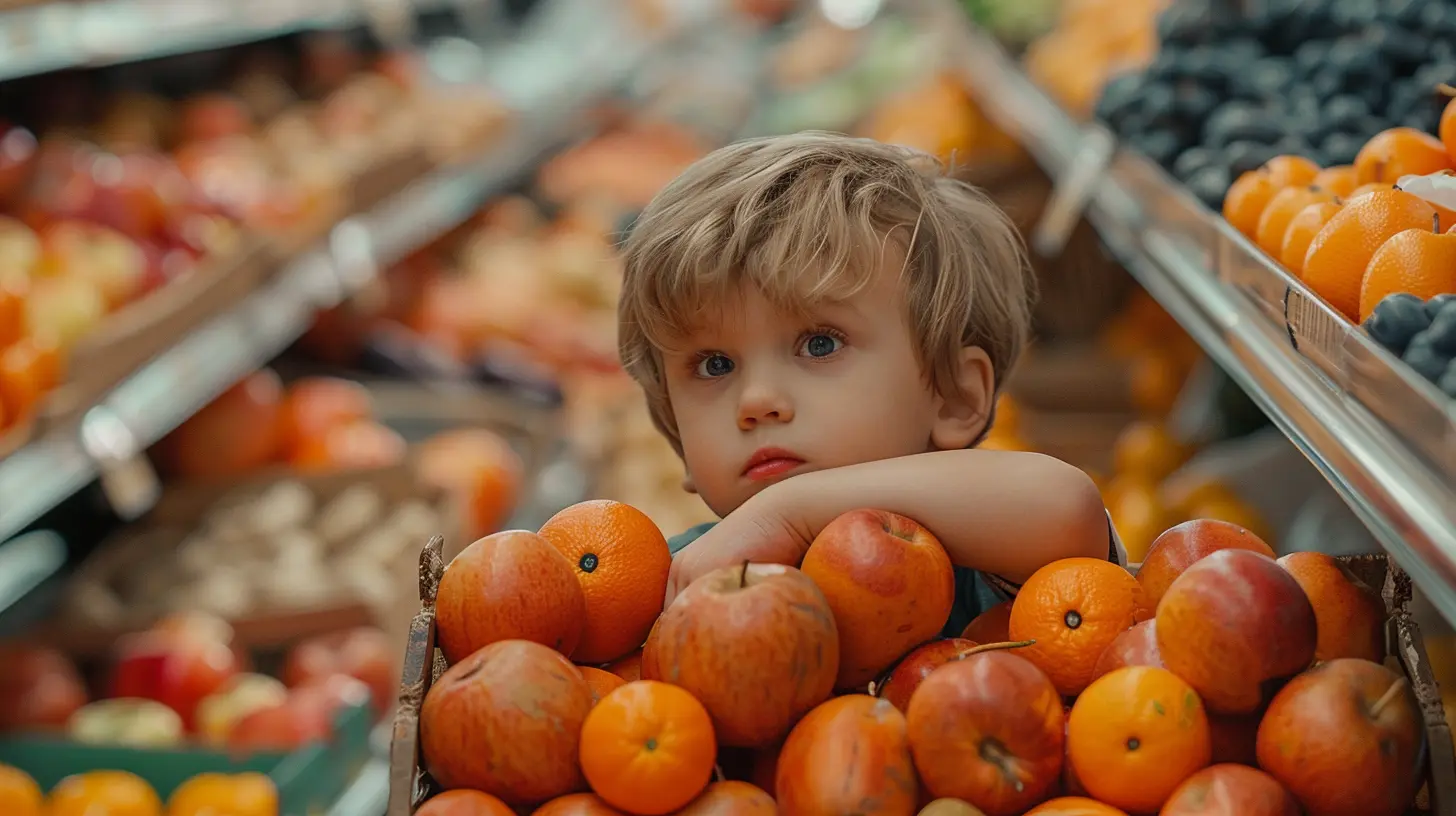Learning to Read Nutrition Labels with Your Kids
13 December 2024
As parents, we’re always looking for ways to instill good habits in our kids, from brushing their teeth to cleaning up after themselves. One habit that's often overlooked but can be incredibly empowering is teaching children how to read nutrition labels. It’s like handing them a magnifying glass to peek into what’s really going on with the food they’re eating, and it’s a skill that can set them up for healthier choices for the rest of their lives.
But how do we tackle this? Where do you even start? Don’t worry—I’ve got you covered! Grab your favorite snack (don't forget to check the label!) and let’s dive into the why, when, and how of teaching your kids to read nutrition labels.
Why It’s Important to Teach Kids About Nutrition Labels
Ever taken a look at a sugar-packed cereal or processed snack and wondered, “Where’s the nutrition in this?” Teaching your kids to read nutrition labels isn't just about understanding numbers or long scientific names. It’s about helping them become mindful of what they’re putting into their bodies.In a world filled with colorful packages, catchy slogans, and cartoon mascots, it’s easy for kids (and sometimes us adults) to choose fun over function. But by showing them how to read labels, you’re not just teaching them to be more aware now—you’re giving them the tools to make informed decisions long into adulthood.
Let’s face it: Food marketers are smart. They know how to make their products attractive, but nutrition labels are your hidden weapon! Once your kids learn how to decode them, they can see past the flashy colors and focus on what really matters—what’s in their food.
When Should You Start Teaching Kids About Nutrition Labels?
Some parents might think, "My child is too young to care about nutrition labels." But really, starting sooner rather than later could be key. As early as elementary school, kids start learning numbers, and this is the perfect time to introduce them to what those numbers mean on a label.Even younger kids can benefit from this lesson, though. If your child can count, they can begin to understand which numbers are “big” or “small” on a label. Start with simple concepts, such as which snacks have less sugar or more fiber. As they get older, you can introduce more complex ideas about macronutrients, vitamins, and ingredients.
And remember: It’s not about having them memorize every detail but more about planting the seed of curiosity and building awareness.
How to Teach Your Kids to Read Nutrition Labels
1. Make It a Fun Learning Activity
Kids love playing detective, right? Turn reading nutrition labels into a family game. You could even call it “Label Detective!” Set a challenge, like finding the snack with the least sugar or the most protein at the grocery store. Make it a scavenger hunt, if you will—because, let’s be honest, hunting for hidden treasures is way more fun!Consider using real-life examples based on foods or snacks they already enjoy (think cereals, granola bars, or juice boxes). The familiarity will make diving into the numbers and ingredients a lot less intimidating.
2. Start With the Basics: Serving Size First
One of the biggest tricks labels like to pull is making the serving size either outrageously small or unrealistic. Explain to your kids that the numbers on a label usually refer to a specific serving size, not the whole bag.For instance, say you’re looking at a bag of chips. If the label says there are 150 calories but there are five servings in the bag, ask your child how many calories they’re actually consuming if they eat the whole bag. (Spoiler: It’s more than 150!) It’s an easy math problem and a real-world lesson rolled into one.
3. Break Down the Nutrients
Once they’ve got the hang of serving sizes, move on to explaining the key nutrients. Here’s a breakdown of how you can explain the most important parts:- Calories: Think of calories like fuel for their bodies. Too little fuel, and you won’t have enough energy for your day. But too much, and your body might store it for later. It’s about balance.
- Fats: Fats get a bad rap, but not all fats are created equal. Explain the difference between "healthy fats" (like those found in nuts and fish) and "not-so-great fats" (like saturated and trans fats in cookies and fried foods).
- Sugars: If there’s one thing kids are drawn to, it’s sugar! But not all sugars are bad; explain the difference between “natural sugars” (found in fruits) and “added sugars” (found in candy and soda). Challenge them by asking, “Can we find a snack with less than 5 grams of added sugar?”
- Fiber: This is the magic ingredient that keeps our digestive system happy. Foods like fruits, veggies, and whole grains have lots of fiber, which helps us stay full and energized.
- Proteins: Kids burn a lot of energy, and proteins are essential for helping their muscles grow strong. Ask them to spot which foods have the most protein.
4. Explain Percent Daily Values (DV)
You know that little percentage on the right side of the label? That’s the Percent Daily Value (%DV). It tells you how much of a nutrient we get relative to our daily needs.Start with a simple explanation: If a label says 20% DV for calcium, it means one serving provides 20% of the calcium you need for the day. Want to make it an easy way for them to remember? Tell them:
- 5% or less is considered low
- 20% or higher is considered high
Now, have some fun! Like, together, find a food that’s high in fiber but low in sodium. This will reinforce the idea of balance.
The Ingredients List: Simpler is Better
Now, let’s talk ingredients. Here’s a rule of thumb: If you can’t pronounce it, you probably don’t want to eat it. But sometimes, it’s a bit more complicated than that.Help your kids understand that the ingredients are listed in order of quantity. In other words, the first ingredient is what the product has the most of, and the last ingredient is what it has the least of. Read a few labels together and see what’s in their favorite snacks.
Point out words that translate to sugar, like high fructose corn syrup, brown rice syrup, or honey, especially if they appear at the top of the list. The more you read labels together, the more they’ll start to recognize these ingredients.
Make Healthy Choices Together
Involve your kids in grocery shopping trips and meal prep. Let them choose a snack or food item and read the label together. Ask questions. For example, “Which yogurt has less sugar?” or “Which bread has more fiber?”This way, you’re not just teaching them how to read a label—you’re making the overall shopping and eating experience a shared, conscious, and mindful activity. Plus, they’ll take more ownership of their food choices when they’ve been part of the decision-making process.
Make it clear that no food is inherently “bad” or “good,” but some foods are better for everyday eating, while others are better for occasional treats. This helps them develop a healthy relationship with both food and nutritional information.
Empower Them to Make their Own Choices
Think about how much information a food label can give. It’s like a roadmap for nutrition! So, once your child has the basics down, encourage them to apply their new skills in real-life scenarios.Maybe during a snack time, ask them to compare two different options and choose the healthier one. Or during a family meal, have them read the label for everyone and explain what they learned. It’s empowering for kids to feel like they can make smart decisions, and this can be a great source of pride.
Final Thoughts: It’s a Lifelong Lesson
Once your kids learn how to read nutrition labels, it’s a skill they’ll carry with them throughout their lives. It’s a bit like teaching them to ride a bike—you might have to guide them at first, but once they’ve got it, they’ll be able to navigate their way through any grocery store, restaurant, or vending machine with confidence!And don’t forget: It’s not about perfection. Nobody has a perfect diet, and that's okay. The goal here is to help your kids develop a good understanding of what’s in their food, make healthier choices, and feel empowered to take control of their nutrition.
So, the next time you’re at the grocery store, grab a few snacks, read the labels together, and have fun with it! You might even learn something new yourself—because after all, we’re all students in the school of good nutrition.
all images in this post were generated using AI tools
Category:
Kids NutritionAuthor:

Liam Huffman
Discussion
rate this article
16 comments
Callista Kearns
Teaching children to read nutrition labels fosters critical thinking and empowers them to make informed choices. It transforms meals into lessons, nurturing their understanding of health, responsibility, and the importance of mindful consumption.
February 7, 2025 at 5:21 PM

Liam Huffman
Absolutely! Teaching kids to read nutrition labels not only enhances their critical thinking but also instills lifelong habits of informed and mindful eating.
Isabella Hines
This article is a great reminder of how essential it is to involve our kids in understanding nutrition labels. It’s a wonderful way to teach them lifelong healthy habits and spark their curiosity about food choices!
February 1, 2025 at 4:31 AM

Liam Huffman
Thank you! I completely agree—teaching kids about nutrition labels is a vital step towards fostering healthy habits and encouraging their curiosity about food.
Valeris Rios
This article offers a fantastic approach to teaching kids about nutrition labels. Engaging them in this process fosters awareness of healthy eating habits early on, empowering them to make informed choices. It's a simple yet effective way to promote lifelong wellness.
January 30, 2025 at 4:35 AM

Liam Huffman
Thank you! I'm glad you found the approach effective. Empowering kids with this knowledge is key to fostering lifelong healthy habits!
Jacob McGeehan
Thank you for this insightful article! Teaching kids to read nutrition labels is such a valuable skill. I can’t wait to start this journey with my children. Great tips!
January 26, 2025 at 3:50 AM

Liam Huffman
Thank you so much for your kind words! I'm glad you found the tips helpful—enjoy the journey with your kids!
Maverick Rivera
Great article! Teaching kids to read nutrition labels fosters healthy habits early on. It empowers them to make informed food choices, promoting independence and awareness about nutrition. Incorporating fun activities while learning can make this experience enjoyable for both parents and children. A valuable skill for life!
January 23, 2025 at 5:52 AM

Liam Huffman
Thank you for your insightful comment! I'm glad you found the article valuable. Teaching kids about nutrition labels is indeed a fun and empowering way to foster healthy habits!
Quill Forbes
Great tips! Teaching kids about nutrition labels is essential for lifelong healthy habits.
January 19, 2025 at 4:06 PM

Liam Huffman
Thank you! Teaching kids about nutrition labels truly sets the foundation for healthy eating habits throughout their lives.
Julian Acevedo
Transform label reading into a fun scavenger hunt—empower kids to be savvy eaters from the start!
January 17, 2025 at 5:56 PM

Liam Huffman
What a fantastic idea! Turning label reading into a scavenger hunt will make learning about nutrition engaging and fun for kids. Thank you for the suggestion!
Dominic Graham
What a fantastic idea! Teaching kids to read nutrition labels not only empowers them to make healthier choices but also sparks curiosity about food. It's a fun way to bond and instill lifelong habits. Can’t wait to try this with my kids! 🍎📚
January 13, 2025 at 5:44 AM

Liam Huffman
Thank you! I'm thrilled you found the idea inspiring. Teaching kids to read nutrition labels is indeed a fun and valuable bonding experience! Enjoy your journey to healthier choices together! 🍎😊
Isaiah McLaurin
What a fantastic idea! Involving kids in reading nutrition labels not only teaches them about healthy choices but also encourages lifelong learning. Can’t wait to try this!
January 8, 2025 at 5:42 AM

Liam Huffman
Thank you! I’m glad you’re excited to try it. Involving kids in this way can make a big difference in their understanding of nutrition!
Capri Smith
Unlock the secrets hidden in nutrition labels and ignite your child's curiosity—transform grocery trips into thrilling adventures where knowledge is the ultimate treasure!
January 2, 2025 at 5:48 PM

Liam Huffman
Absolutely! Turning grocery trips into fun learning experiences can make nutrition labels exciting for kids. Let's spark their curiosity and empower them with knowledge!
Drake McClellan
Empowering our kids with knowledge about nutrition labels not only fosters healthy habits but also instills lifelong skills. Let’s create a brighter, healthier future together!
December 28, 2024 at 3:33 PM

Liam Huffman
Absolutely! Educating kids about nutrition labels is a vital step toward promoting healthy choices and lifelong wellness. Let's continue to inspire our future generations!
Nix Lopez
Empowering kids to understand nutrition labels fosters healthier choices and encourages lifelong habits. Great tips in this article!
December 25, 2024 at 4:13 AM

Liam Huffman
Thank you! I'm glad you found the tips helpful for fostering healthy habits in kids!
Zaylee McCaw
What a fantastic article! Teaching kids to read nutrition labels not only promotes healthy eating habits but also empowers them with knowledge for life. Your tips make it fun and engaging—perfect for fostering curiosity and responsibility in our little ones!
December 23, 2024 at 3:41 AM

Liam Huffman
Thank you for your kind words! I'm glad you found the tips helpful for promoting healthy habits and curiosity in kids. Happy reading!
Halle Nelson
This article offers practical tips for teaching kids to read nutrition labels, making healthy choices fun and engaging. Involving children in the process not only empowers them but also fosters lifelong habits. A great way to instill nutritional awareness early on!
December 14, 2024 at 4:18 AM

Liam Huffman
Thank you! I'm glad you found the tips helpful for engaging kids in nutrition education. Empowering them early is key to building healthy habits!
Kassandra Bass
Teaching kids about nutrition labels: because if they can read, they can negotiate snack time like pros!
December 13, 2024 at 4:06 PM

Liam Huffman
Absolutely! Teaching kids to read nutrition labels empowers them to make informed choices and advocate for healthier snacks. It’s a valuable life skill!
Liv McDougal
Who knew deciphering nutrition labels could double as a scavenger hunt? Kids become mini detectives while we uncover the mysteries of snack time together!
December 13, 2024 at 4:03 AM

Liam Huffman
Absolutely! It's a fun way to combine learning and bonding, turning snack time into an engaging adventure.
MORE POSTS

Encouraging Teamwork and Responsibility in Family Settings

Helping Your Child Manage Academic Stress

Kids and Careers: Tips for Thriving in Both Worlds

The Art of Listening When Your Teen Needs to Talk

How Storytelling Enhances a Child's Social and Cognitive Abilities

The Role of Public Speaking in Building Confidence Early On

Tips for Instilling a Strong Work Ethic in Your Children

Crafting Holiday Traditions that Reflect Your Family’s Values

Fostering Independence in Twins Without Creating Distance

How to Set Boundaries with Twins While Maintaining Fairness